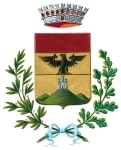Berchidda is a small town of just under 3,000 inhabitants, set in an environment of plains, hills and mountains, with a territory covering 20,188 hectares. Rich is the flora, typically Mediterranean, that characterizes it. The economy consists mainly of livestock breeding (sheep and cattle) and agriculture (especially vines and olives), which allow for important activities in dairy and wine production, handicrafts and trade. There are numerous historical testimonies dating back to the pre-Nuragic and Nuragic periods: dolmens, menhirs and nuraghi. Instead, the remains of Monte Acuto Castle, called“Casteddu” by the agitators, date back to the medieval period. In ancient times, the town stood at the foot of Mount Ruinas, until, following a landslide and a violent plague, the inhabitants were forced to move across the“Rio Zocculu” and rebuild it where it stands today. Characteristic is the Piazza del Popolo, recently renovated, which, in addition to offering a beautiful panorama sweeping over the surrounding area, saw overlooking, a unique case in Sardinia, three churches, one of which is now deconsecrated. From some parish chronicles, dating back to the late 1700s, we know that the Berchiddesi were a very hard-working people, but poorly educated and, unfortunately, addicted to violence and revenge, plagues that contributed greatly to feeding poverty; but, fortunately, with education and civilization things changed, so much so that the town has achieved, over the years, a fair amount of economic and social well-being. There are numerous country churches in the area: St. Catherine of Alexandria, St. Andrew’s and St. Michael’s, located east of the village and dating, probably, all from the same period, the 1600s, and all of poor and crude construction; St. Mark’s, to the west, on the other hand, has been enriched (probably being close to Mount Acuto), with some capitals, a valuable Retablo and a beautiful and precious, life-size statue of the saint; very few ruins, on the other hand, of the churches of St. Peter and St. Gavino; there are also records of the church of St. Barbara, which apparently stood near the present middle school and was demolished to build a private residence. Among the personalities who brought prestige to the town are Francesco Alvaro Mannu, the priest Giuliano Fresu. Prominent figure was, among the politicians, Giangiorgio Casu, alderman for agriculture in the first regional council. Certainly the most distinguished figure is that of Canon Pietro Casu. Prominent figures of the latter period include Antonio Rossi, esteemed poet and winner of numerous regional and national awards, and Paolo Fresu, internationally renowned jazz musician, creator and artistic director of the renowned Time in Jazz Festival.



